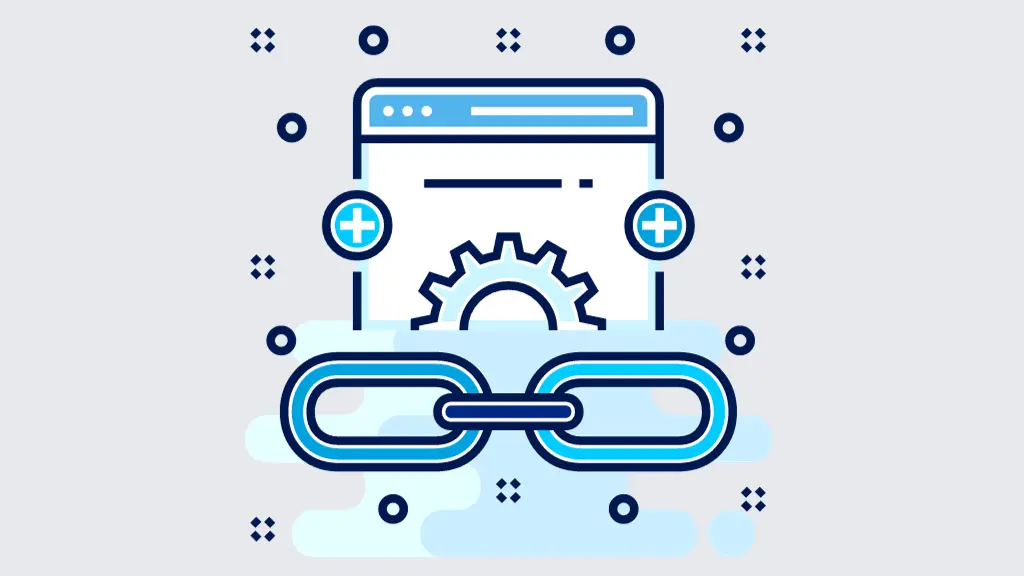As we’re transitioning into 2024, there’s been a noticeable shift in link-building dynamics. Gone are the days when any link, from any source, could bolster your SEO efforts. The game has changed, demanding a more strategic and discerning approach. With search engines becoming smarter, the quality of a backlink, its relevance, and the authenticity behind its placement have become paramount.
We’ll delve deep into the intricacies of dofollow links in this new age, guiding you through best practices and ensuring your SEO strategies are both effective and future-proof.
The Essence to Buy Dofollow Backlinks in 2023
Link-building has always been a cornerstone of SEO. However, not all links are created equal. Understanding the nuances between different types of links is crucial for anyone looking to harness their full potential in 2023 and beyond.
The Fundamental Difference Between Dofollow and Nofollow Backlinks
At the heart of the link-building conversation lie two primary link types: “dofollow” and “nofollow“. The distinction between them is more than just nomenclature; it’s about how search engines interpret and value these links.
a. Dofollow Links: By default, all the links you add to a webpage are dofollow links. These are the kind that SEOs covet. When a site links to your website with a dofollow link, it passes on “link juice“.
This not only acts as a vote of confidence for your content but also positively impacts your site’s authority and ranking potential.
b. Nofollow Links: Introduced by Google in 2005, nofollow links come with a rel=”nofollow” attribute, indicating to search engines that the link shouldn’t pass on SEO value. Typically, these are used in instances where the authenticity or credibility of the linking site is uncertain.
While they don’t directly pass on SEO value, nofollow links can still drive traffic and lend credibility in more indirect ways.
Why Buying Dofollow Backlinks Remain Pivotal in 2023’s SEO Landscape?

The digital landscape of 2023 is more competitive than ever. As businesses and content creators vie for the top spots on search engine results pages, dofollow links have retained their significance for several reasons:
a. Authority Building: Dofollow links from reputable sources can significantly bolster a site’s domain authority. In a world where credibility is king, these links act as stamps of approval, signalling to search engines that your content is valuable and trusted by others in the industry.
b. Organic Traffic Boost: With higher authority comes improved search rankings. Dofollow links play a pivotal role in driving organic traffic to your website, ensuring that your content reaches its intended audience.
c. Relationship Building: Acquiring dofollow links often requires outreach and collaboration. This not only helps in gaining valuable backlinks but also fosters relationships within the industry, paving the way for future collaborations.
d. Algorithm Affinity: Despite the myriad updates and refinements to search algorithms, dofollow links remain a consistent ranking factor. Search engines view them as evidence of the value and relevance of your content in the larger digital ecosystem.
Historical Context: The Evolution of Buying Dofollow Backlinks

The realm of SEO, since its inception, has witnessed myriad strategies rise and fall. One of the most controversial and dynamic facets within this domain has been link buying. To fully grasp its significance, it’s essential to understand its evolution over the years.
Tracing Back the Journey: From Black Hat to Refined Strategies
In the early days of SEO, the mantra was simple: more links equalled higher rankings. This led to a Wild West scenario where websites indiscriminately acquired as many links as possible, often without regard to quality or relevance. The primary goal was volume, and several tactics emerged:
a. Link Farms: Websites created solely to link to other sites, offering no real value and often appearing spammy.
b. Paid Directories: Directories that would include links for a fee, without any stringent criteria for inclusion.
c. Bulk Purchases: Websites would buy hundreds or even thousands of links for a nominal fee, regardless of the linking site’s relevance or authority.
Google, recognising the deteriorating quality of search results due to these practices, began to crack down. With updates like Penguin in 2012, sites employing black-hat link-building strategies faced severe penalties, leading to a dramatic drop in rankings or even de-indexing.
This ushered in a new era of link-building. Recognising the importance of quality and relevance over sheer quantity, SEO professionals started refining their strategies. The emphasis shifted to earning links through high-quality content, influencer collaborations, and genuine outreach. While buying links didn’t disappear, it became a more nuanced game, focusing on genuine partnerships, relevance, and long-term value.
Lessons from Past Mistakes in Buying Dofollow Backlinks
The turbulent history of link buying has imparted some invaluable lessons:
a. Quality Over Quantity: A single link from a reputable, authoritative site is worth more than dozens from low-quality, irrelevant sources.
b. Relevance Matters: Links should be contextual. A link from a site in the same or a related industry carries far more weight than one from an unrelated domain.
c. Transparency is Key: Trying to trick search engines with deceptive practices is not sustainable. It’s a game where, sooner or later, you’re bound to lose.
d. Diversify: Just as with financial investments, diversifying your link profile is crucial. Relying too heavily on one type of link or source can leave you vulnerable to algorithm updates.
e. Long-Term Vision: SEO is a marathon, not a sprint. While shortcuts might offer temporary gains, sustainable success requires patience, effort, and genuine value creation.
Dangers and Pitfalls in Buying Dofollow Backlinks

In the pursuit of improving search rankings, it can be tempting to seek quick fixes and shortcuts. While buying links might seem like an expedient solution, it comes with significant risks, especially if not approached with caution. Here, we delve into the potential dangers and pitfalls associated with buying low-quality links.
The Consequences of Buying Low-Quality Dofolllow Backlinks
a. Damaged Reputation: Associating with spammy, low-quality websites can harm your brand’s online reputation. Users and other businesses may question your credibility if they see you linked from or to dubious sites.
b. Reduced Organic Traffic: Search engines prioritize user experience. Low-quality links can lead to lower rankings, meaning your site could become less visible in search results, leading to a decrease in organic traffic.
c. Wasted Resources: Money spent on buying low-quality links is essentially thrown away. Not only do these links not provide value, but they can also actively harm your SEO efforts.
Google’s Perspective and Potential Penalties
Google’s stance on link schemes, including buying and selling links, is clear: they are violations of the search giant’s Webmaster Guidelines. Over the years, Google has fine-tuned its algorithms, like Penguin, to detect and penalise unnatural linking behaviors.
A. Potential penalties include:
1. Manual Penalties: Your site can be manually reviewed and penalised by Google’s team. This can lead to a significant drop in rankings or even complete de-indexing from search results.
2. Algorithmic Demotions: Google’s algorithms can automatically demote web pages or entire websites that appear to have unnatural backlink profiles.
3. Loss of Trust: Once penalised, regaining Google’s trust can be a lengthy and challenging process. Recovery might require a thorough link audit and the removal or disavowal of harmful backlinks.
Case Studies: Businesses That Faced Repercussions

J.C. Penney (2011): In what is perhaps one of the most high-profile cases, the retail giant J.C. Penney was found to have thousands of suspicious, unrelated backlinks pointing to its site. As a result, their rankings plummeted for numerous keywords, affecting their organic traffic and sales.
Overstock (2011): Overstock faced penalties when Google discovered they were offering discounts to schools in exchange for backlinks. This unnatural linking scheme led to a significant drop in their search visibility for several months.
Private Blog Networks (PBNs) Crackdown (2014): Many businesses and SEO agencies used PBNs – networks of sites created solely for link-building purposes. Google cracked down on this practice, leading to many websites losing rankings overnight.
Each of these cases underscores the inherent risks of pursuing short-term, black-hat link-building tactics. As the adage goes, “If it seems too good to be true, it probably is.” In the world of SEO, shortcuts and quick fixes can lead to long-term damage, emphasising the importance of ethical and sustainable strategies.
Vet Before You Buy Dofollow Backlinks
While buying dofollow links can offer tangible SEO benefits, it’s essential to ensure that these links come from reputable sources. Here’s a guide on how to vet potential link sources before making a purchase.
A. Identifying Credible Link Sources
a. Website History: Investigate the website’s past. A credible website will typically have several years of consistent history. Be wary of sites that have periods of downtime or domain changes, as these can be red flags.
b. Organic Content: A genuine, quality site will have a steady flow of original content. Sites that duplicate content or exhibit spammy behaviour should be avoided.
c. Genuine Traffic: Use tools to gauge if the site has real, consistent traffic. A site with a genuine audience indicates that it’s trusted and viewed as a valuable resource.
The Importance of Domain Authority, Relevance, and Content Quality
A. Domain Authority (DA): DA is a score (on a 100-point scale) developed by Moz that predicts how well a website will rank on search engines. While it’s not the only metric, a higher DA generally indicates a more authoritative site.
B. Relevance: Even if a site has a high DA, it must be relevant to your niche or industry. Links from related sites carry more weight in search algorithms and appear more natural.
C. Content Quality: Peruse the website’s content. High-quality, well-researched, and original content is indicative of a reputable site. Avoid sites with poorly written, spun, or scraped content.
Tools and Platforms to Verify Dofollow Link Quality
A. Moz’s Link Explorer: Offers insights into a site’s backlink profile, domain authority, and page authority.
B. SEMrush: A comprehensive SEO tool that provides data on backlinks, domain authority, and organic traffic.
C. Ahrefs: Known for its extensive backlink database, it offers insights into a site’s link profile, domain rating, and overall health.
D. Majestic: Focuses on link analysis, providing metrics like Trust Flow and Citation Flow, which help gauge the quality and trustworthiness of potential link sources.
E. Google Search Console: While not primarily for vetting other sites, it’s invaluable for monitoring your site’s backlinks and understanding where your links come from.
Diversification is Key

In the realm of SEO, diversification isn’t just a buzzword—it’s a survival strategy. Just as savvy investor spread out their portfolio to mitigate risks, smart marketer ensures that their backlink profile is varied and dynamic.
A. Why You Shouldn’t Put All Your Eggs in One Basket?
1. Vulnerability to Algorithmic Shifts: SEO is in a perpetual state of flux, and relying too heavily on one type or source of link puts you at the mercy of unforeseen changes. If that particular link source or type falls out of favour in Google’s eyes, your website’s ranking might plummet overnight.
2. Perception of Unnatural Link Building: A backlink profile heavily skewed towards a particular type of link or domain might raise red flags for search engines. Diversification ensures a more organic-looking link acquisition, which is favoured by search engines.
3. Diminishing Returns: After a certain point, acquiring more and more links from the same source might yield lower SEO returns. A varied link profile ensures a steady and broad influx of referral traffic.
B. Strategies for Diversifying Your Link Profile!
1. Multiple Sources: Avoid the temptation of buying bulk links from a single provider or domain. Instead, source your links from various websites, industries, and even geographical locations (if relevant to your business).
2. Varied Link Types: Acquire a mix of backlinks, such as editorial links, guest posts, and PR Links. This presents a holistic link-building strategy that’s resilient to shifts in SEO trends.
3. Anchor Text Diversity: Ensure that the clickable text (anchor text) in your backlinks isn’t overly repetitive. Use a mix of exact-match, partial-match, branded, and generic anchor texts.
4. Engage with Different DA (Domain Authority) Sites: While it’s tempting to only target high-DA sites, remember that links from medium and even some low-DA sites (as long as they are relevant and genuine) can add diversity and authenticity to your link profile.
Budgeting and ROI

In the vast landscape of SEO, purchasing dofollow links can be a potent strategy. However, it requires a delicate balance of investment and expected returns. Let’s delve deeper into the financial intricacies of this strategy.
A. Determining a Budget for Dofollow Backlinks:
a. Your Overall Marketing Budget: As with any marketing activity, your dofollow link buying strategy should be a fraction of your total marketing budget. Ensure it doesn’t overshadow other equally important SEO and marketing activities.
b. Industry Norms: Researching and understanding what competitors in your industry are investing can provide a ballpark figure. Though it’s essential not to mimic blindly, this gives a context for your budgeting.
c. Specific SEO Goals: Are you aiming for a quick boost in rankings, or are you looking at a long-term, sustained SEO strategy?
Immediate goals might require a more aggressive budget, while long-term strategies might spread the budget over time.
B. Measuring the ROI of Your Backlink Buying Strategy:
a. Organic Traffic Growth: One of the most direct indicators of successful link-building is an uptick in organic traffic. Use tools like Google Analytics to monitor the inflow of visitors over time.
b. Rankings for Targeted Keywords: Using tools like SEMrush or Ahrefs, monitor your website’s position for specific keywords before and after your link-buying spree. A successful campaign should show a marked improvement in keyword rankings.
c. Conversion Rates: At the end of the day, traffic is a vanity metric if it doesn’t convert. Monitor the conversion rates of the traffic you gain through these links—be it sign-ups, sales, or any other conversion goal.
C. Cost Versus Long-Term Benefits:
a. Longevity of Links: A high-quality link from a reputable site might stay live and continue to pass SEO juice for years. Compare this longevity to a link that might become obsolete or get taken down within months.
b. Continued Relevance: A link from an evergreen piece of content or a steadily popular website will provide continuous value. Conversely, a link from a fleeting trend article or a site losing traffic might not offer lasting benefits.
c. Initial Cost Assessment: Higher upfront costs might seem daunting, but it’s essential to weigh this against the prolonged benefits a quality link might provide. Sometimes, it’s more cost-effective to invest more initially for a link that offers sustained benefits.
Navigating the Sea of Service Providers

The digital age has ushered in a plethora of link-building service providers, each promising the moon and the stars. But, as with any industry, not all providers are created equal. Here’s a guide to navigating these waters confidently and efficiently.
a. Top-rated Platforms and Services to Consider in 2023:
1. Marketing Lad: We are the best high-quality link providers. Our account managers connect you with real websites and acquire the best possible links for your brand.
2. Authority Builders: Known for its commitment to high-quality links, this platform connects websites with real, vetted link-building opportunities.
3. Link Whisper: Beyond its innovative internal linking tool, it offers insightful suggestions and has garnered respect in the SEO community.
4. SEO Butler: Distinguishing itself with its diversified offerings from content services to links, SEO Butler remains a favourite for many businesses.
5. ReachCreator: A platform praised for its transparency, ReachCreator facilitates genuine relationships between bloggers and businesses, ensuring organic link placements.
b. Red Flags: How to Spot Dubious Service Providers:
a. Too Good to Be True Offers: Promises of hundreds of high-quality links overnight at unbelievably low prices? It’s likely a trap.
b. Lack of Transparency: If a provider is evasive about their strategies, sources of links, or past work, proceed with caution.
c. Generic or Templated Reports: Genuine providers will furnish detailed, custom reports showcasing the work done. Beware of generic reports that lack depth or specifics.
d. Absence of a Digital Footprint: Any reputable link-building service should have an active online presence, including a functional website, user reviews, and perhaps even case studies.
The Ethics and Controversy Surrounding Dofollow Backlink Buying

Since its inception, the practice of buying links has remained one of the most hotly debated topics. With search engines continuously refining their algorithms to prioritise organic and genuine content, the ethical dimensions of link buying have never been more scrutinised. Here, we unravel the arguments and delve into the nuances of engaging in this practice ethically.
The Ongoing Debate in the SEO Community!
The “Unfair Advantage” Argument: Detractors of link buying often argue that it gives an unfair advantage to businesses with deeper pockets, undermining the very essence of organic search. They believe that SERP (Search Engine Results Page) positions should be earned through merit—quality content and organic outreach—not purchased.
The “It’s Just Marketing” Perspective: Proponents counter by likening link buying to other forms of marketing. Just as companies pay for ad placements or sponsored content, they argue, link buying is another tool in the promotional arsenal—one that doesn’t necessarily compromise content quality or relevance.
Search Engines’ Stance: The likes of Google have made their position clear: they discourage buying links that pass PageRank. Such practices, if detected, can lead to penalties. They also recognise that not all paid links are manipulative, and it’s the intent behind the purchase that matters.
How to Engage in Ethical Backlink-Buying Practices?
a. Transparency is Paramount: If you’re buying links for promotional or referral traffic, be transparent. Use rel=”sponsored” or rel=”nofollow” attributes to signal to search engines that the link isn’t intended to manipulate PageRank.
b. Quality Over Quantity: Ethical link buying focuses on securing links from reputable, relevant sites rather than amassing a large number of low-quality links. The emphasis should be on adding value to web users, not just boosting SEO metrics.
c. Avoid “Link Farms”: These are sites created solely for link building. Associating with such entities not only risks search engine penalties but also tarnishes your brand’s reputation.
d. Genuine Partnerships: If you’re investing in links, consider collaboration with industry-relevant bloggers, influencers, or websites. Sponsored content, guest posts, or joint ventures can be ways to ethically acquire links while providing value to both parties and the audience.
Beyond 2023: Predictions for the Future of Backlink Buying

The dynamic landscape of SEO, shaped by evolving user behaviours, technological advancements, and ever-changing search engine algorithms, necessitates that marketers remain forward-thinking. As we glance beyond 2023, the practice of link buying is bound to evolve, influenced by a multitude of factors. Let’s venture into some educated predictions about its future trajectory.
A. Analysing Emerging Trends and Shifts:
a. Rise of AI and Machine Learning: As AI and ML technologies mature, search engines will become even more adept at discerning the nature and quality of links. Differentiation between organic, high-quality links and spammy, purchased links will be sharper than ever.
b. Emphasis on E-A-T (Expertise, Authoritativeness, Trustworthiness): Google has already placed significant weight on E-A-T, especially for YMYL (Your Money or Your Life) websites. The future might see an even more profound emphasis on links from authoritative and trustworthy domains, potentially making generic link-buying strategies less effective.
c. Value-Driven Link Building: The focus will shift more towards creating genuine value for web users. Brands might invest more in collaborations, joint ventures, and high-quality content that naturally attracts links.
d. Voice Search and Semantic SEO: With the proliferation of voice-activated devices, there will be a growing emphasis on semantic search and context. This could influence how links are evaluated, prioritizing those that offer comprehensive, context-rich information.
B. Adapting to Potential Changes in Google’s Algorithms:
a. Continuous Monitoring: Google updates its algorithms frequently, often without prior notice. SEO professionals will need to be on their toes, monitoring their site’s performance and adapting their link-building strategies accordingly.
b. Diversification: Relying solely on link buying might become riskier. Brands will need to diversify their SEO strategies, combining organic link-building methods with judicious link purchases, ensuring they aren’t overly reliant on one tactic.
c. Engaging with the SEO Community: One of the best ways to stay ahead of algorithmic changes is to be plugged into the SEO community. Link Building Slacks, Forums, blogs, webinars, and conferences will become invaluable resources for gauging the pulse of the industry and preempting shifts.
d. Investing in Training and Education: As the nuances of link evaluation become more intricate, there will be a premium on expertise. Brands and SEO professionals will need to invest in continuous learning to stay ahead of the curve.
Expert Round-Up

The ever-changing landscape of SEO often necessitates insights from those at the forefront of the industry. To provide a comprehensive understanding of link buying in 2023, we reached out to a panel of seasoned SEO professionals. Here’s what they had to say:
1. Samantha Reed, Founder of SEOQuest:
“While link buying remains a contentious topic, there’s no denying its effectiveness when done right. The key is ensuring transparency and alignment with your broader brand values. It’s not about shortcuts, but about amplifying your brand’s voice in the right places.”
Practical Tip: Samantha emphasises the importance of ongoing relationship-building with industry-relevant bloggers and site owners. A single quality link from a well-regarded site can outweigh dozens from lesser-known sources.
2. Aaron Mitchell, Chief Strategist at LinkLogic:
“Google’s algorithms are smarter than ever, and brands need to adapt. It’s not about how many links you can buy but about the authenticity and value they bring.”
Recommendation: Aaron suggests leveraging tools like Ahrefs or SEMrush not just for competitor analysis but also for assessing the quality of potential link sources.
3. Priya Verma, SEO Consultant and Speaker:
“The narrative around link buying needs to change. Instead of looking at it as a transaction, view it as a partnership. Collaborative content, guest posts, and genuine engagements are the future.”
Experience: Priya recounts how a client, instead of simply buying links, co-created a content series with industry influencers. The result? Organic links, increased engagement, and a boost in domain authority.
4. Tom Nguyen, Author of ‘Link Dynamics’:
“The lines between organic link-building and link buying are blurring. The smartest brands in 2023 will be those that combine both, creating a harmonious link profile that signals trust and authority to search engines.”
Practical Tip: Tom advises brands to maintain a healthy balance in their link profiles—combining organic outreach, collaborations, and strategic link purchases.
5. Lina Ortiz, Head of SEO at DigitalFront:
“It’s essential to remember that SEO isn’t static. What works today might not work tomorrow. With link buying, it’s crucial to keep an ear to the ground, anticipate shifts, and be ready to pivot your strategy when needed.”
Experience: Lina shares how a sudden Google update once impacted many of her purchased links. The lesson? Always diversify your link-building strategies to mitigate risks.
Next Steps:
The journey through the intricacies of link buying has unveiled not just the strategies but the underlying ethics and principles that guide successful SEO endeavours. As we conclude, let’s distil our insights into key takeaways and best practices for the future. In doing so, not only can they achieve sustainable SEO success but also foster trust and credibility in the digital realm.




